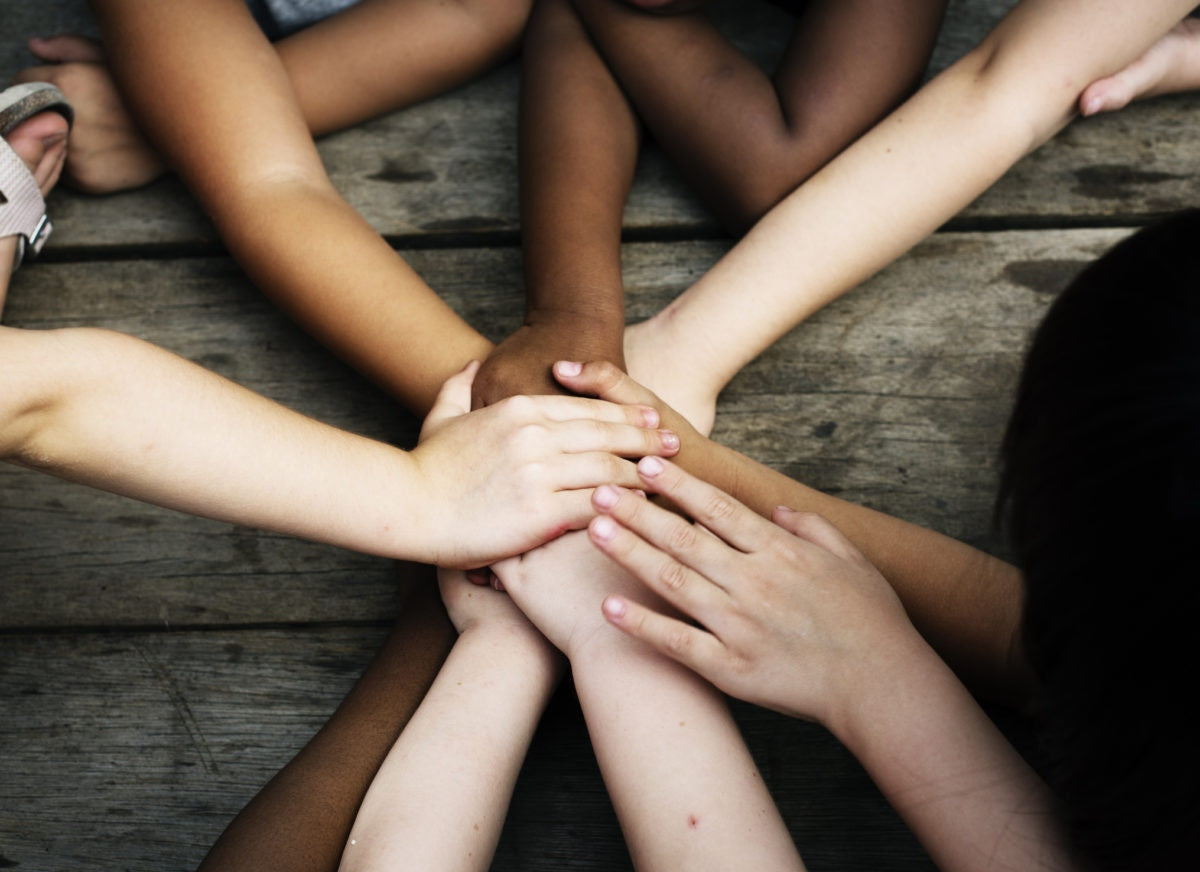It was another routine weekday morning of volunteering with preschoolers while their parents attended a community class.
I sat beside a child playing with well-worn plastic kitchen toys. Pretend spaghetti was “cooked” and had to be fed to recruits from the doll collection. I held out a little black baby doll to the three-year-old chef.
Pushing the doll away, the child said, “I don’t want her. She’s dirty. She has a dirty face.”
My heart stopped. I wondered if the child had noticed my brown skin. Did she think I was dirty, too? Or, worse still, did she think my kids, born and raised in America, hadn’t taken showers either?
As an Indian immigrant in the U.S., I’ve had minor brushes with racism. But this remark had come from a cherubic three-year-old. The issue wasn’t the child. The issue was that her parents had probably assumed that their child didn’t notice skin color.
Parents are often reluctant to talk to their kids about race. The implicit understanding is that that children are colorblind, that they have an innate belief in equality. Parents simplistically believe that just because they themselves don’t hold any prejudices based on skin color, their child will automatically imbibe the same ideal. We prefer not to draw too much attention to our differences, because, after all, isn’t that what divides us?
Perhaps not. If parents don’t address race, children think of it as a taboo topic and come to their own conclusions – a composite sketch cobbled together from assumptions, the media, and friends.
The incident with the doll isn’t an isolated one. Even within my small social circle of immigrant friends, I’ve heard stories of bias from kids under the age of five. A friend’s daughter was told by her preschool classmates that she couldn’t be a princess because she was too brown. Another friend’s child has been told repeatedly that she’s ugly and needs to go back to Africa. Still another acquaintance’s child was told to bring an “American” lunch, instead of his “smelly” food – or else no one would be his friend.
This is heart-breaking stuff, and we can’t sweep it under the carpet. According to studies quoted by the authors of the book “Nurture Shock”, babies as young as six months old are already noticing differences in skin color. In another study from the University of Texas, children as young as three attributed positive traits to those from their own race and negative characteristics to those who looked different.
As uncomfortable as the subject is, in today’s “us” versus “them” culture, parents need to engage with kids – even preschoolers – in age-appropriate conversations about diversity.
Yet, like every other aspect of parenting, what we do speaks far louder than what we say. Our kids are watching us, picking up cues from our body language and facial expressions. If we walk into an ethnic neighborhood and comment that it smells, that’s exactly what our kids are going to believe. If all our friends look like us, think like us, and talk like us, our kids will be most comfortable with homogeneity.
Sometimes, though, while you would love to find a friend from a different ethnicity, maybe it’s just not practical based on where you live. In that case, be intentional about reading books that include diverse characters, incidents that awaken your child’s sense of empathy and justice, or even sense of wonder about cultures around them.
Picture books like “The Name Jar”, the 1962 classic “The Snowy Day”, or “God’s Dream” by Archbishop Desmond Tutu can get the conversation started, even with kids who are not yet in elementary school.
Introduce them to Sesame Street shows that take on complex topics with sensitivity, like the episode where Whoopi Goldberg and Elmo have a little tête-à-tête about skin color.
Explicit, age-appropriate, value-based conversations around these books and shows can help answer kids’ questions instead of creating an uncomfortable silence around the issue of diversity.
If your child happens to make a racially-insensitive remark, don’t go all “How could you say that?” on them. Try to find out where they could have picked up a certain opinion. Ask why they think, for instance, the doll is dirty. Then explain to them the simple but indisputable truth that there is strength in diversity.
In the words of Maya Angelou, “It is time for parents to teach young people early on that in diversity there is beauty and there is strength.”


